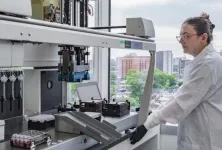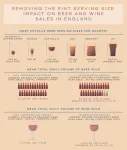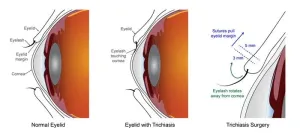A group of physicists has now come together to map out these partons and disentangle how they interact to form hadrons. Based at the U.S. Department of Energy’s Thomas Jefferson National Accelerator Facility and known as the HadStruc Collaboration, these nuclear physicists have been working on a mathematical description of the interactions of partons. Their latest findings were recently published in the Journal of High Energy Physics.
“The HadStruc Collaboration is a group based out of the Jefferson Lab Theory Center and some of the nearby universities,” said HadStruc member Joseph Karpie, a postdoctoral researcher in Jefferson Lab’s Center for Theoretical and Computational Physics. “We have some people at William & Mary and Old Dominion University.”
Other collaboration members who are co-authors on the paper are Jefferson Lab scientists Robert Edwards, Colin Egerer, Eloy Romero and David Richards. The William & Mary Department of Physics is represented by Hervé Dutrieux, Christopher Monahan and Kostas Orginos, who also has a joint position at Jefferson Lab. Anatoly Radyushkin is also a Jefferson Lab joint faculty member affiliated with Old Dominion University, while Savvas Zafeiropoulos is at Université de Toulon in France.
A Strong Theory
The components of hadrons, called partons, are bound together by the strong interaction, one of the four fundamental forces of nature, along with gravity, electromagnetism and the weak force, which is observed in particle decay.
Karpie explained that the members of the HadStruc Collaboration, like many theoretical physicists worldwide, are trying to determine where and how the quarks and gluons are distributed within the proton. The group uses a mathematical approach known as lattice quantum chromodynamics (QCD) to calculate how the proton is constructed.
Dutrieux, a post-doctoral researcher at William & Mary, explained that the group’s paper outlines a three-dimensional approach to understanding the hadronic structure through the QCD lens. This approach was then carried out via supercomputer calculations.
The 3D concept is based on the notion of generalized parton distributions (GPDs). GPDs offer theoretical advantages over the structures as visualized through one-dimensional parton distribution functions (PDFs), an older QCD approach.
“Well, the GPD is much better in the sense that it allows you to elucidate one of the big questions we have about the proton, which is how its spin arises,” Dutrieux said. “The one-dimensional PDF gives you a very, very limited picture about that.”
He explained that the proton consists in a first approximation of two up quarks and one down quark — known as valence quarks. The valence quarks are mediated by a variable roster of gluons spawned from strong force interactions, which act to glue the quarks together. These gluons, as well as pairs of quarks-antiquarks — usually denoted as the sea of quarks-antiquarks when distinguishing them from the valence quarks — are continually being created and dissolving back into the strong force.
One of the stunning realizations on the proton’s spin came in 1987, when experimental measurements demonstrated that the spin of quarks contributes to less than half of the overall spin of the proton. In fact, a lot of the proton’s spin could arise from the gluon spin and the motion of partons in the form of orbital angular momentum. A lot of experimental and computational effort is still necessary to clarify this situation.
“GPDs represent a promising opportunity to access this orbital angular part and produce a firmly grounded explanation of how the proton’s spin is distributed among quarks and gluons,” Dutrieux noted.
He went on to say that another aspect that the collaboration hopes to address through GPDs is a concept known as the energy momentum tensor.
“The energy momentum tensor really tells you how energy and momentum are distributed inside your proton,” Dutrieux said. “They tell you how your proton interacts with gravity as well. But right now, we're just studying its distribution of matter.”
Simulating the Data
As mentioned, accessing this information requires some sophisticated calculations on supercomputers. After developing their new approach, the theorists then conducted 65,000 simulations of the theory and its assumptions to test it out.
This tremendous number of calculations was performed on Frontera at the Texas Advanced Computer Center and the Frontier supercomputer at Oak Ridge Leadership Computing Facility, a DOE Office of Science user facility at Oak Ridge National Laboratory. This number included 186 simulations of protons moving with different momenta carried out in the background of 350 randomly generated collections of gluons. This calculation required the processors at these facilities to collectively run for millions of hours. Final analysis of these results is completed on the smaller supercomputers at Jefferson Lab.
The upshot of this work was a robust test of the 3D approach developed by the theorists. This test is an important milestone result for DOE’s Quark-Gluon Tomography (QGT) Topical Collaboration.
“This was our proof of principle. We wanted to know if the results from these simulations would look reasonable based on what we already know about these particles,” said Karpie. “Our next step is to improve the approximations we used in these calculations. That’s computationally 100 times more expensive in terms of computing time,” Karpie said.
New Data on the Horizon
Karpie pointed out that the HadStruc Collaboration’s GPD theory is already being examined in experiments at high-energy facilities worldwide. Two processes for examining hadron structure through GPDs, deeply virtual Compton scattering (DVCS) and deeply virtual meson production (DVMP), are being conducted at Jefferson Lab and other facilities.
Karpie and Dutrieux expect the group’s work to be on the slate of experiments at the Electron-Ion Collider (EIC), a particle accelerator being built at DOE’s Brookhaven National Laboratory on Long Island. Jefferson Lab has partnered with Brookhaven National Laboratory on the project.
It’s expected that the EIC will be powerful enough to probe hadrons beyond the point at which today’s instruments start to lose signal, but the exploration of the structure of how hadrons are assembled won’t be waiting for the EIC to come online.
“We have some new experiments at Jefferson Lab. They're collecting data now and giving us information for comparing to our calculations,” Karpie said. “And then we hope to be able to build up and get even better information at the EIC. It is all part of this progress chain.”
The HadStruc Collaboration members are looking toward additional experimental applications of their QCD theory work at Jefferson Lab and other facilities. An example of this is using supercomputers to calculate more precise results of data that have been in hand for decades.
Karpie added that he hopes to get a couple of steps ahead of the experimenters.
“QCD has always lagged behind experiments. We were usually post-dicting instead of pre-dicting what things are happening,” Karpie said. “So, now if we can actually get ahead — if we can do something that the experimenters can't do yet—that would be pretty cool.”
A portion of this work was supported by Jefferson Lab’s Lab Directed Research & Development program. The LDRD program devotes a small portion of the lab’s research effort to supporting initiatives that are at the forefront of science and technology relevant to the DOE mission.
A full list of supporting funders, organizations and supercomputing resources can be found in the journal article.
By Joseph McClain
-end-
Jefferson Science Associates, LLC, manages and operates the Thomas Jefferson National Accelerator Facility, or Jefferson Lab, for the U.S. Department of Energy's Office of Science. JSA is a wholly owned subsidiary of the Southeastern Universities Research Association, Inc. (SURA).
DOE’s Office of Science is the single largest supporter of basic research in the physical sciences in the United States and is working to address some of the most pressing challenges of our time. For more information, visit https://energy.gov/science
END





